This is my first article of a seven-article How-To series on the Glamping makeover of my Casita Travel Trailer:
(Please see my post, My Casita Camper “Before Glamping” Pictures, to learn why I chose to buy a Casita Travel Trailer, including before pictures as I cleaned her up to get ready for her makeover).
Chalk Painting Cabinet Doors:
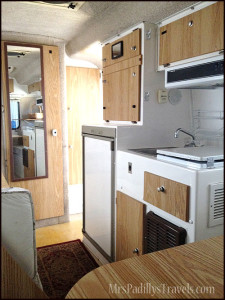 The picture you see here is what the interior of my Casita looked like before the makeover.
The picture you see here is what the interior of my Casita looked like before the makeover.
If you notice, the interior walls are either white molded fiberglass or carpet, except the cabinet doors.
The cabinet doors are standard MDF door construction made to look like wood.
My Casita is a 2006 model, but the newer models are still made with these MDF doors and similar hardware. It is a nice, clean look but not Glamped enough for me.
Where do I get my inspiration?
I receive my inspiration from many sources, but if you go to my Pinterest board, Glamping Trailer Interiors, you will see a wonderful potpourri of camper designs!
I genuinely believe that ALL of the designs I save to my Pinterest board are beautiful, suiting the taste of the person who created them.
And while I LOVE color, which is all over my home, I wanted a subtle interior in my travel trailer, a little shabby chic mixed with a beach cottage feel.
Preparing to Chalk Paint my Casita
The image below shows what the carpet on the walls looks like.

Outside of all the labor involved in cleaning the carpet in my Casita, painting the cabinet doors was the MOST labor-intensive.
NOTE! You cannot shortcut this section. If you want to paint your cabinet doors, take the time and do it right. You will be delighted that you did.
8 Steps to Chalk Painting Cabinet Doors:
Step 1: Remove all the cabinet doors to be painted.
The obvious first step in this process is to remove all the cabinet doors you want to paint.
However, what is easy to forget is to tag the back of each door with a numbered sticker and place another sticker with the same number at the place where you removed the door.
This step is critical because many of the cabinet door panels are the same size, and you want to make sure each panel goes back on the hardware you removed it from so everything (i.e., screw holes) lines up, or your doors may not fit well.
Also, note I said, “remove all the cabinet doors that you want to paint.”
I decided that any door in my Casita hidden from view would stay in its original condition (i.e., brown).
After all, chalk paint can be expensive, and if you are not going to see the door, why paint it? (The last picture in this post shows you some of the painted doors and walls and those that remained unpainted.)
Step 2: Selecting the chalk paint colors and tools.
I must share with you upfront: this is NOT my first chalk painting project, and I did take a class on several ways to work with chalk paint.
Depending on your personal skill level, taking a class may or may not be necessary. However, I consider myself an artist/designer by trade, and I still find training by someone who has worked with the material very beneficial.
advertisement
The paint I was trained on is Annie Sloan. There are many brands out there, and from what I hear others say, this is one of the more expensive, but it hasn’t failed me yet. I love how well it goes on.
Another popular and easy-to-find brand is DecoArt AMERICANA DECORE CHALKY FINISH SHABBY CHIC PAINT. (affiliate link) This link is for their Serene color. You can start there and search for their other colors.
Again, I have not used this paint, but if this is the only paint available to you, it gets good reviews and seems worth a try (and at that price, I think I will order it to use on some projects).
You can also find recipes on the Internet for making your chalk paint. I may like to try that on a future project, but my camper doors were not the place to experiment.
If you want to make chalk paint, this post on user experience with chalk paint brands is excellent. It includes reviews of paint and how to make your recipe.
So why did I choose chalk paint over other forms of paint?
While I love the look of chalk paint, the number one reason I chose to use it is that you DO NOT have to prep the surface you will paint.
No sanding of any kind! It doesn’t even have to be wood! I’ve seen it used on leather and metal, too!
This photo shows everything I used to paint my cabinet doors and walls:
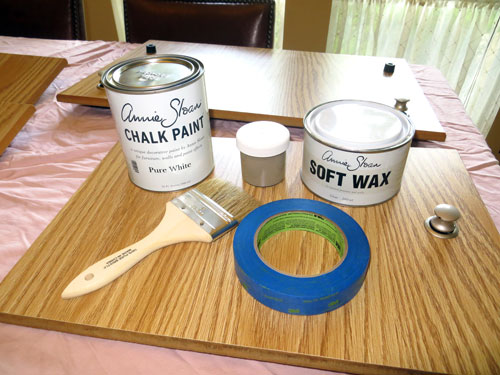
- A 32-ounce can of Pure White. This is the “whitest” of the Annie Sloan colors.
- Small jar of Coco. Where I buy my paint, I can purchase small containers of colors. This saves me money from buying a 32-ounce can for a color I rarely use. I used the Coco color to add a dry brush technique to my doors, giving a subtle, aged look.
- Anne Sloan’s Soft Wax in clear. (She makes a dark wax, which I have used on other projects, and although I have never tried it, I understand you can add a little chalk paint to the clear wax to tint it to whatever you please.)
- Painter’s Tape and a Cheap Paint Brush. I want to emphasize the “cheap” paintbrush. Annie Sloan does make some very nice brushes to use with her products, but I am tough on brushes, and the brush in the photo does the trick for me. Furthermore, I have no guilt about throwing it away. If you take better care of your brushes than I do, you might want to invest in one of Annie Sloan’s; they are very nice.
The next photo is a color palette I made when I took my class, and it shows all the different colors in the Annie Sloan series. As you can see, there is a beautiful collection of colors!
Step 3: Lining up my doors to paint and covering hardware with painter’s tape:
I painted the cabinet doors on my kitchen table, covered with an old bedsheet. Even with this preparation, soft specks of paint did get on my tile floors, which I had to clean. So, if you want to avoid that step, cover your floors, too!
I also taped the hardware to protect it from the paint, which you will see in Step 4 below.
If you wish, you can remove all the hardware, but you would want to make sure to number which hardware went to which door so the screws line up again when you are done. I didn’t feel that step was necessary (and too much work!).
Step 4: Initial Coats of Chalk Paint
You will note that the top door has one coat of chalk paint in the image below, and the bottom door has two. I used three coats of Pure White paint on all surfaces.
Note: When working with the paint, and to give the illusion of “grain,” I painted in the same direction as the original grain on the doors. Also, note in the next photo that I chose not to paint the back of my doors.
Again, there is a cost to chalk paint. But I chose to leave them in their natural state so I could scrub them should anything they hide get on the door. Chalk paint does clean well, but why worry if you don’t have to?
Step 5: Dry Brushing with Coco Color
To create a dry brush effect, take your second color, put a small amount on your brush, then dab it on a paper towel to remove most of the paint. Then, in a light sweeping motion, barely touching the door, brush up and down in the “grain” direction to get the look you want.
How much you put on is entirely up to you, and you may wish to practice on a sample board beforehand. But if you mess up, no worries; cover the mistake with more Pure White paint, and give it another try!
Look closely at these doors, and you can see I dry brushed in an upward fashion, making sure to add a little more on the edges of the door.
Step 6: Adding Architectural Detail to a Door
It was important to me that one door had some architectural detail and wasn’t flat. So, I chose the door above the sink in my Casita to add some detail.
In the following four images, you will see how I transformed this plain door by gluing on a piece of wood accent molding I purchased at the local home store.
If you can’t find something similar at your local hardware store, this molding is close to what I used: Ekena Millwork Small Farmingdale Center with Scrolls (affiliate link).
Once the wood glue dried, I painted it with three coats of Pure White (a little more paint was needed to fill in all the molding details) and then dry brushed it with Coco. I love the way this door turned out!
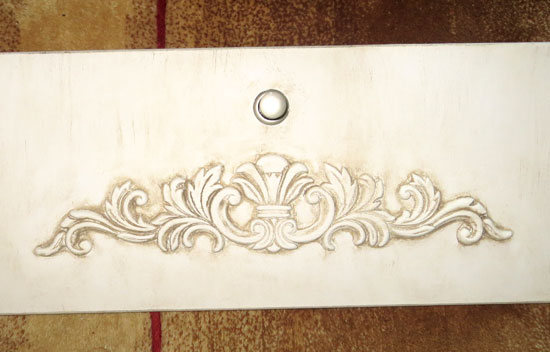
Step 7: Chalk Painting the Dinette Table
Painting the dinette table was the same as painting the cabinet doors.
advertisement
Note the can of Soft Wax on the table. This helped seal the chalk paint, especially for the dinette table, because it creates a waterproof surface, so liquids do not absorb into the paint, making for easy cleanup.

All my chalk-painted cabinet doors and walls got at least one coat of clear wax, which I applied AFTER reinstalling in my camper.
I chose to add the wax after I reinstalled the doors because you must rub the wax in, just like you were waxing a car.
I found it easier to complete this process when I had the door hinged and locked.
Step 8: Chalk Painting Interior Walls and reinstalling doors in the camper.
In this last image, you can see where I added chalk paint to the center panel, dividing the dinette area from the bed.
Also, note all the surfaces I did not paint. The bed will cover those surfaces, so I felt no need to paint them.
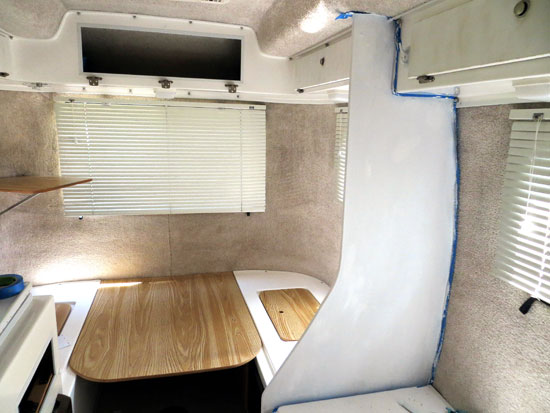
My cabinet doors and interior walls are complete, and I already see a significant transformation in my camper!
The white cabinet doors have brightened and opened the space, and I love the look!
In my next article, I will share how I added teal spray paint accents to some of the Casita’s interior and exterior surfaces.
In the meantime, please feel free to ask me any questions you may have, make comments, or share experiences. I’d love to hear from you!
Happy Trails!
Mrs. Padilly
Mrs. Padilly’s 17′ Spirit Deluxe Casita Travel Trailer’s Glamping Makeover Series:
Introduction:
Casita Glamping Makeover:
- Chalk Painting Cabinet Doors
- Adding Teal Paint to Accent Surfaces
- Installing a Tile Backsplash
- Installing Wood Vinyl Flooring
- Stenciling the Screen Door
- Window Treatments
- Dressed for Glamping
Check out my Shasta Makeover Series. Just click below to go to the first article in the series.
Discover more from Mrs. Padilly's Travels
Subscribe to get the latest posts sent to your email.


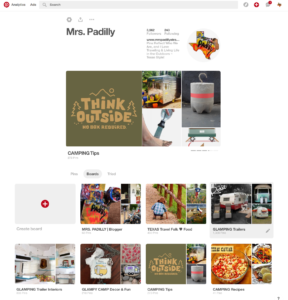
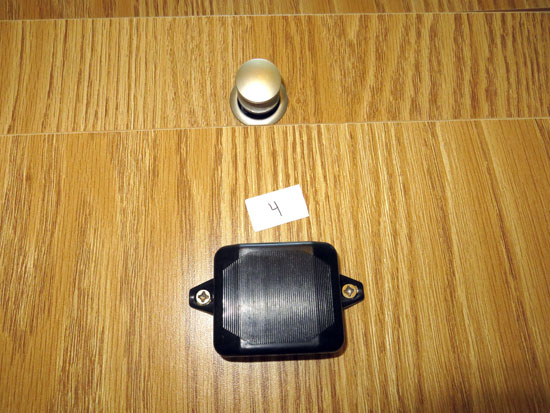
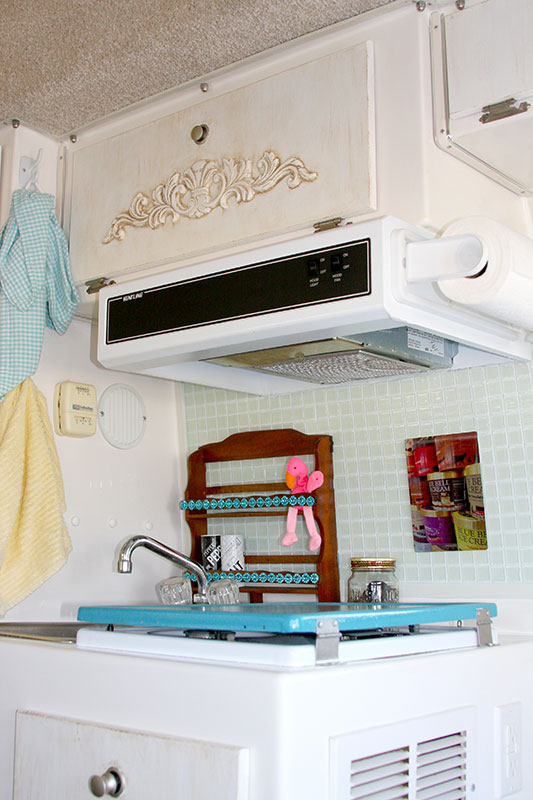
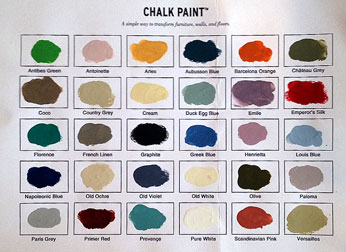
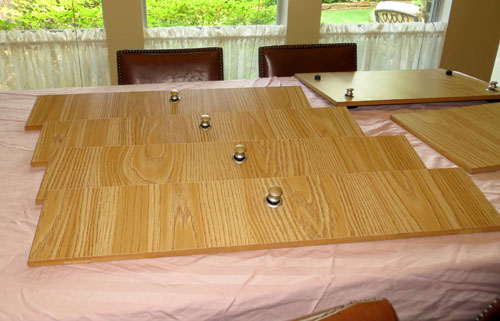
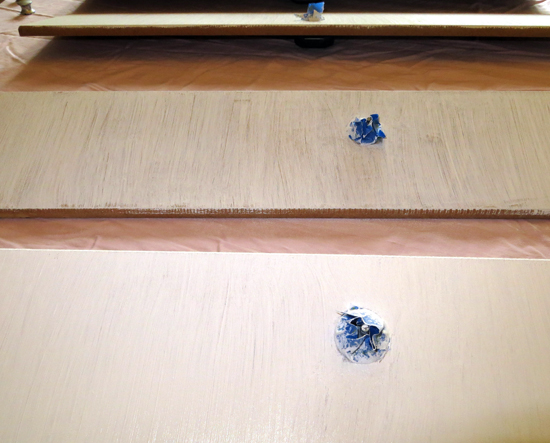
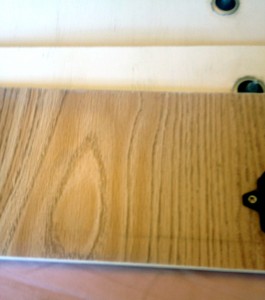

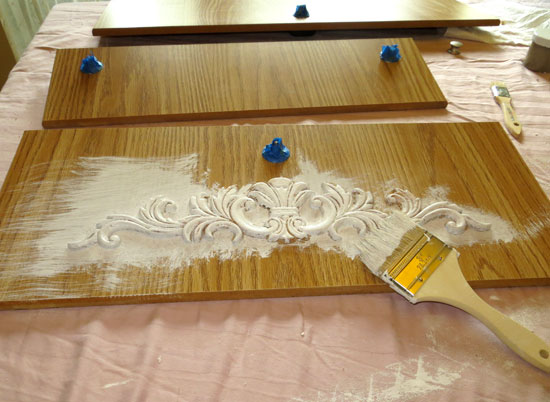
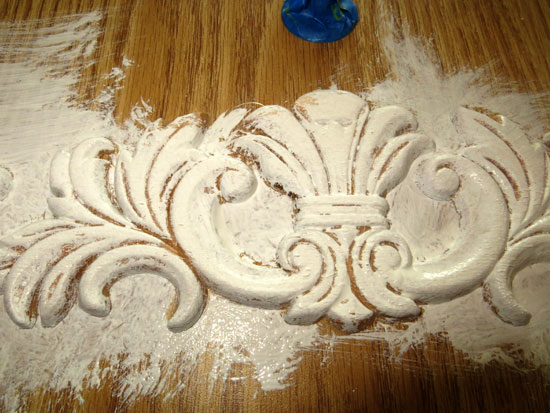
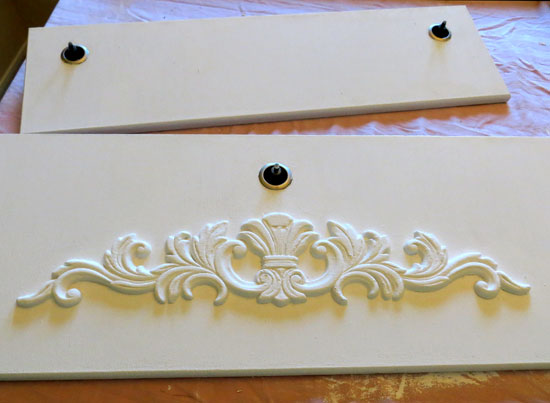
Holla Mrs. Padilly, I just wanted to thank you for sharing your ideas on how to GLAM trailer. Great easy and affordable changes. I’m planning on tiling back splash behind stove…..Happy campint…
Howdy Maria! Thank you for your comments, and I hope my tips make the job easy and successful. Have a great day!
Did you do a light sanding b fore painting the Casita Cabinets?
Hi Rane. No, since I used chalk paint, you do not need to sand before painting. Just make sure they are clean of any grease/oil.
I have bee restoring an old trailer. I have been looking into chalk paint, but one of the tutorials I watched said the wax will melt off in extreme temps. Did you find this to be the case?
Hi Teri. I personally have not found this to be the case with my chalk painted surfaces, which are on the INSIDE of my Casita.
I live in Texas, and summer’s are hot, and it is not unreasonable to think the interior of my camper get’s over 100 degrees when not in use.
However, I suppose it could be possible if you placed a chalked and waxed painted surface directly in the sun on a 100 degree day, and just let it sit there, that the wax could get soft and/or melt off.
My camper’s chalk painted interior is now two years old and it still looks great with the Annie Sloan paint that I used.
Hope this helps you make your decision! Happy Trails!
Love the cabinet doors as well as the back door. Am so going to do this! What colors did you use? Undercoat as well as the top coat? And is the “undercoat” simply one coat of latex? Thanks
Thank you. I used Old White with clear wax. There is NO undercoat. That is the beauty of chalk paint. Just make sure the surface is clean then apply paint to give the coverage you want. Once dry, apply clear wax and then rub into surface. The wax seals the paint and give it a nice glow
Did you paint your walls with the chalk paint as well? I am doing my HiLo Camper 2002. I had a mold problem under the old paint someone else had put on due to a roof leak. So I sanded the walls and put Kilz over all of it. I bought a peel and stick wallpaper to put over it, but if for some reason it doesn’t stay very long I will try to paint them. Did you post photos of the walls completed?
The outer walls of the Casita are carpeted, but the wall that divides the dining from the bed is chalk painted, and is included in the post. I can’t speak about the mold problem, but the chalk paint should have no problem being painted on top of the Kilz (and staying).
LOVE YOUR TRAILER, I AM REDOING MY CABINETS ALSO BUT I AM BESIDE MYSELF WENT TO LOWES AND THE GIRL GOT ME SO MIXED UP SHE SAID I NEED TO KNOW IF I WANT EXTERIOR PAINT INSTEAD IF INTERIOR CAUSE OF THE WEATHER TEMPERATURES, MOLD, MOISTURE I GUESS. WHAT BRAND DID YOU USE? i LOVE THE SHABBY CHIC AND THATS WHAT I AM AIMING FOR BUT DIDNT KNOW IF I SHOULD GO WITH CABINET PAINT IN THE FLAT THEN DO MY ANTIQUTING . BUT I AM A LITTLE CONCERNED I MIGHT NEED SEMI GLOSS. COULD YOU HELP OR GUIDE ME IN THE RIGHT DIRECTION?
Hi Laurie, I did not use any standard cabinet paint (interior or exterior), I used chalk paint. The benefits of chalk paint is you do not need to prep the cabinets to paint. Here is a link to the brand of chalk paint that I used. http://www.anniesloan.com/annie-sloan-products/paints/chalk-paint.html. It provides a lot of information about the paint, and my post shows the steps I took to paint the cabinets in my trailer. I hope this helps!
I am SO happy to see this post! I’ve been researching Casita models and the one thing I do not like is the mdf “wood” on the cabinet doors. With your chalk paint solution the interior looks classy and beautiful! I also love your choice of paint color (white/coco). Shabby chic is such a pretty look and what I hope to accomplish in my design work after I find my perfect little Casita. Thank you so much for sharing this! Rhonda
I don’t know WHY the mdf “wood” seems to be the standard in most campers I’ve seen. I personally am not a fan, too, and it was definitely one of the first things I had to change. Chalk painting them white was easy, and it made a BIG difference!
You did a wonderful job! Did you find it hard to remove the hardware and then re screw it in the fiberglass? I am afraid to crack the fiberglass .. What kind of window treatments have you done? Do you have pictures of the finished interior ?
Thank you, Karen. I only removed the hardware from each door panel, and left the hinges intact in the fiberglass. However, we did have to replace one hinge, and it was no problem at all. In fact, the hinges can be found at your local home improvement store.
As for the window treatments, I will be posting on that within the next few days, with the full reveal posted in early December. 🙂
I actually bought some faux ceiling tin back splash panels for my Casita frig and for behind the stove/sink area a few years ago. They are still leaning up against the wall in the Casita.. Ok, i need to get busy.
T.
I’m familiar with that ceiling tin, and have a little in my house; almost considered it as the backsplash on my Casita but the brand that I use is just a few inches to small, and I didn’t want to cut another to make up the small difference. But I love that look, and it would look great on the fridge!
Love your updated doors. I have used the AS paint for many projects over the years. Works great on everything from plastic, wood, cement, metal and much more. I also painted my home cabinet doors with AS paint but I didn’t remove the doors and it was super easy and fast. Took about 45 min to paint a large kitchen full of cabinets. I have huge Pinterest boards with Glamping inspiration and yet have not touched my 20 yr old Casita to glamp her out. The chandy I bought to hang over the table is sitting in the closet and vintage quilts to cover the cushions are stored in the under seat compartments. I am getting inspired to move forward with fluffing her up with something, chippy, rusty, and of course somethings lacy. Thanks for inspiring me to girl ify my Casita.
Cement! I haven’t considered that… more painting options! 🙂 I am totally impressed that you could paint a large kitchen in 45 minutes! I move much slower than that (that would probably take me a day)! My third grade art teacher once complimented me on how far I could get on a painting with very little paint. Now I’m beginning to wonder if I move slow because I don’t want to use any more paint than I have to! Spreading it out as far as it will go! Guess I was frugal with my paint since childhood! LOL.
Thank you so much for the inspiration! Just purchased our Casita and I chalk painted all the cabinets. Wow, what a beautiful difference it made ☺ Lynn (happy camper in WI)
Wonderful, Lynn (aka Happy Camper in WI)! Enjoy your new Casita, and I am so happy to learn that you were inspired to chalk paint your cabinets! 😀 Check out my “Resource” link above. There are a couple Casita on-line groups you may want to join. Happy Trails!